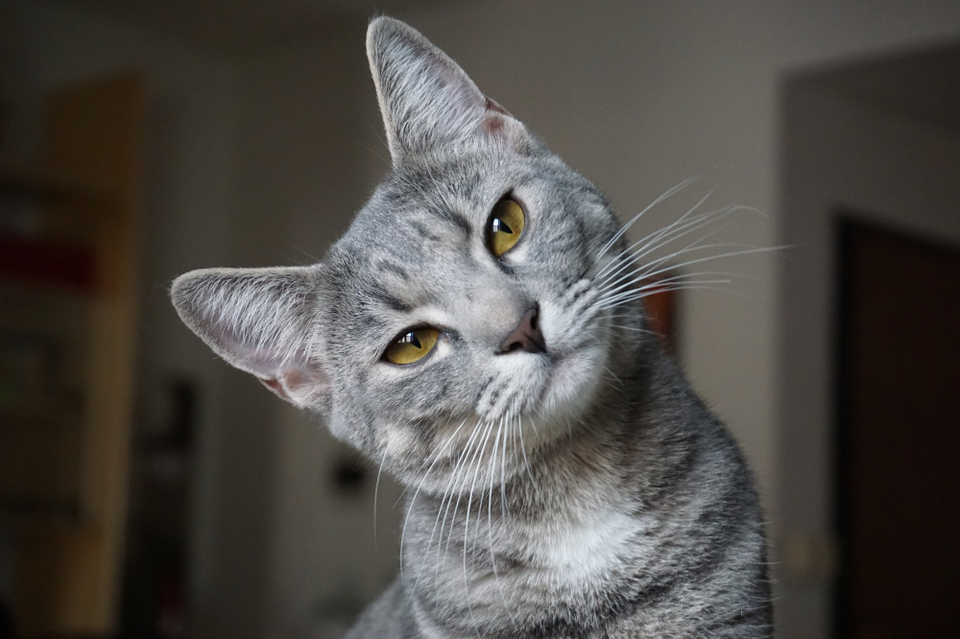
How to Tell When Your Cat is Upset

There is no denying that cats are fickle little animals. They are great companions and can show a lot of love, but can also be cranky and picky. Even with their wide range of emotional displaying techniques, it can sometimes be hard to tell if your cat is upset. Let’s take a look at the feline language and see if we can make decoding your kitty’s mood a little bit easier.
Vocalization

Cats can be quiet, sneaky, and are quite good at creeping around. But, they’re also known for their ability to hiss and spit to get their point across. This is the easiest way to tell if your cat is upset with something. Hissing, spitting, general growling or a low, rumbling growl all relay that your cat is not happy and needs you to back off and leave them alone before the claws potentially come out.
Body Language

Cats are very expressive with their bodies. From happy wiggles when they are getting petted to rubbing themselves in circles around your legs when they are excited to see you, their body language can really tell you a lot about how they are feeling.
For example, when a cat lays its ears in a position known as “airplane ears” where they lay flat against the cat’s head, they are probably not very happy about what is going on around them or are feeling a little nervous.
Similarly, your cat’s eyes will give away a lot of information concerning their mood. Your cat’s pupils will usually dilate when they are angry. When combined with hissing or growling, it is a definite, clear signal. Of course, your cat is not angry every time their pupils are dilated since this is also a way for the pupils to react to light, but if their pupils are constricted in tandem with other signs, chances are they are not feeling safe or happy.
An arched back or fluffed tail also signal distress. Similarly, a tail that is swishing back and forth rapidly or that is clamped tightly against your cat’s body could be seen as a way of communicating discomfort.
Look for visual cues that your cat is not feeling its best. These are often some of the clearest options.
Distance

If a cat is keeping its distance from you and seems startled or uncomfortable when people approach it, they are probably not feeling the best and are rather upset. This does not mean you did anything wrong, it just means your cat was stressed by something and needs some space.
Do not try to force them to interact, just give them time, and soon they will likely come back around and be your best buddy again. It is just a waiting game of sorts. In the meantime, offer them a soft place and plenty of food and water to rest and recover with until they are feeling comfortable again.
Something like the ultra-soft CatNap™ Anti-Scratch & Waterproof Throw Blanket would be perfect. You can place it near where you spend most of your time and soon, the soft, plush nature of the blanket will draw your furry friend in. As they get more comfortable, they will move closer and things will soon be back to normal.
This is especially true if they are newer cats who just need time adjusting. Comfort items definitely help most of the time! Hiding or not wanting to be touched are normal behaviors that can sometimes just be expected when you have cats.
Loss of Interest

Sometimes, cats may suddenly lose interest in their toys or avoid their comfortable old bed and act rather mopey. This is another common way of expressing feline discomfort. This could literally just be annoyance caused by your cat being bored with their toys or tired of the same bed. Over time, beds can become uncomfortable and cats can get annoyed with not being able to find a soft, cozy spot.
You can fix this by offering new toys or cycling through their toys. Even giving them a few out at a time and holding the rest back to swap out once your kitty is over the old favorites could remedy the situation. Similarly, if your cat cannot get comfortable on their bed, swapping to a new one can help. This is especially true with older kitties who may be experiencing some joint pain or stiffness when they first wake up. A cat bed can work to help support their joints and give them a comfortable, stable place to rest, regardless of age or health.
You can even buy the CatNap Faux Fur Orthopedic Cat Bed and Anti-Scratch and Waterproof Throw Blanket together in a set for a discounted price if you really want to provide an ultimately comfortable experience for your beloved pets!
Aggression

Sudden aggression in cats is something that definitely warrants concern. It could mean anything from stress to an injury or illness. That being said, if you just introduced a new animal to your kitty or otherwise disrupted its life in a major way through moving, having a baby, changing roommates, or anything similar, they may be acting out.
Cats do not have control of their environment so these changes really impact them in a big way. This can cause your cat to become aggressive towards things in your home, people, or other animals. If you notice these behaviors, speaking with a vet or working to gently replace or remove the behaviors through training can be a big help, as can giving them a place to get away from everything and have alone time until they adjust.
Don’t Worry. It’s Normal!

Having an upset cat is no uncommon thing. Cats can be grouchy by nature and get uncomfortable or have their feelings hurt easily. Give them some time and they are sure to come around, especially if you can fix the root cause of their distress!
Share this article
written by

